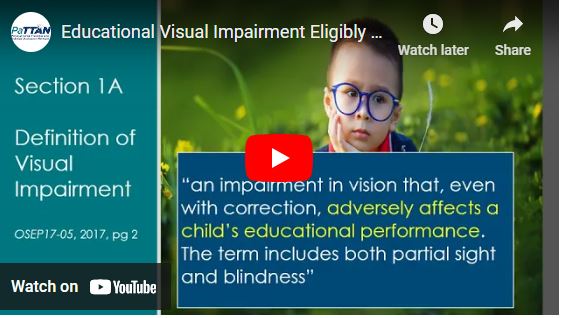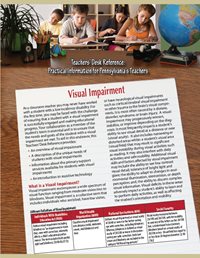The educational definition of visual impairment, as outlined by IDEA, determines eligibility for special education services and the need for specially designed instruction to access the educational curriculum across multiple settings. Unlike medical definitions of visual impairment, the educational definition does not stipulate any diagnostic criteria measurements (e.g., visual acuity such as 20/70, a visual field such as less than 20%) nor diagnosed eye condition. While it is best practice to ask for an eye report during the assessment for eligibility and reevaluation process, one cannot be required, nor can a visual acuity and/or visual field range be stipulated.
Resources
For more information on this topic please refer to the following resources:
OSEP 17-05 Memorandum: Eligibility Determinations for Children Suspected of Having a Visual Impairment Including Blindness under the Individuals with Disabilities Education Act
PaTTAN Recording: Educational Visual Impairment Eligibility – OSEP Memo 17-05
- This recording is just over 12 minutes.
- It reviews the salient points in Memo 17-05 on Visual Impairment Eligibility from the US. Office of Special Education Programs
- Viewers are encouraged to download the OSEP 17-05 memo (resource listed above).

 PaTTAN Publication: Teacher Desk Reference: Visual Impairment
PaTTAN Publication: Teacher Desk Reference: Visual Impairment
- Refer to the sections What is a Visual Impairment (p. 1-2) and Unique Needs of Students With Visual Impairments: Assessments (p.2)
PaTTAN BVI Webpage: Topics of Interest: Assessments